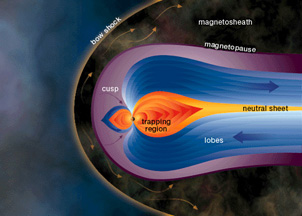This is a drawing of the magnetosphere of Jupiter.
Click on image for full size
Windows to the Universe original artwork
A Look at Jupiter's Magnetosphere
Jupiter's magnetosphere is very special. It is the biggest thing in the entire solar system. Not only is it big enough to hold all of Jupiter's moons, but the sun itself could fit inside. It goes all the way to Saturn. If it could be seen at night, it would be as big in the sky as the full moon.
The unusual way that Jupiter's magnetic field is made affects the shape of different parts of Jupiter's magnetosphere.
Jupiter has a donut-shaped cloud which goes around inside the magnetosphere. Jupiter lights up with very beautiful aurora. Jupiter also makes radio signals and other waves, called whistler waves, chorus and hiss.
You might also be interested in:
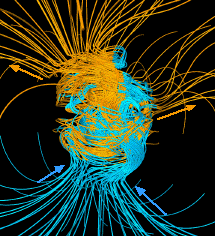
Magnetospheres are generated with 1.) magnetic materials and 2.) with motions within the magnetic material. The Earth-like planets generate magnetospheres from iron at the center. This leads to roundly-shaped
...more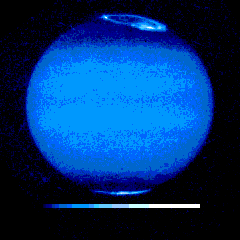
Jupiter's aurora is a very powerful source of energy. It produces much more power (about a million MegaWatts) than the Earth's aurora (about 1000 MegaWatts). For comparison, a large city uses about 1
...more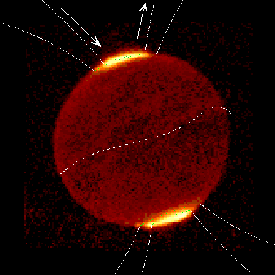
The most powerful currents in the magnetosphere are those which power the Jovian aurora. As shown in the figure, the Jovian aurora is thought to come from two sources, the moon Io, and from currents carrying
...more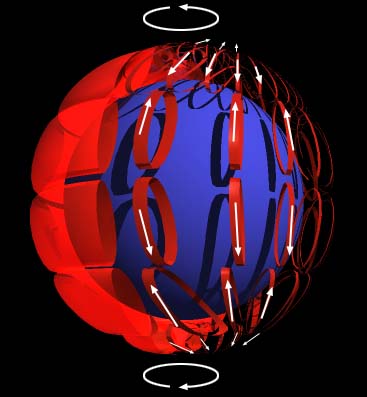
Motions in the interior of a planet help carry heat from the inside to the outside. The drawing to the left illustrates a kind of global motion that is typical of motions in the atmosphere as well as the
...more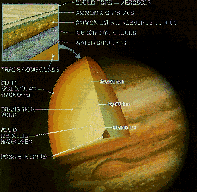
The Giant planets do not have the same layered structure that the terrestrial planets do. Their evolution was quite different than that of the terrestrial planets, and they have less solid material. Jupiter's
...more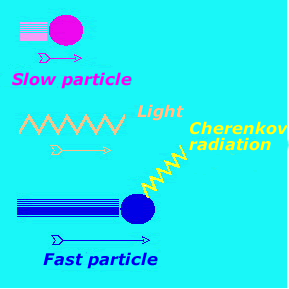
If you are sitting in the dentist's chair and they decide to X-ray your teeth, they put a big shield over you for protection. Why? Because they need to shield you from 'radiation'. Radiation comes in many
...more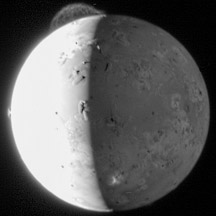
The New Horizons spacecraft is on its way to Pluto. Along the way, it flew past the giant planet Jupiter. When the spacecraft flew by Jupiter, Jupiter's strong gravity gave New Horizons a "slingshot
...more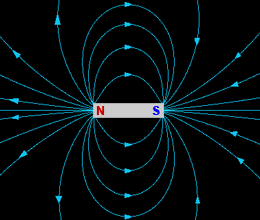
Have you ever seen a bar magnet? Bar magnets have two magnetic poles - north and south. The magnetic field around a bar magnet is called a dipole magnetic field. "Dipole" means "two poles". Bar magnets
...more


